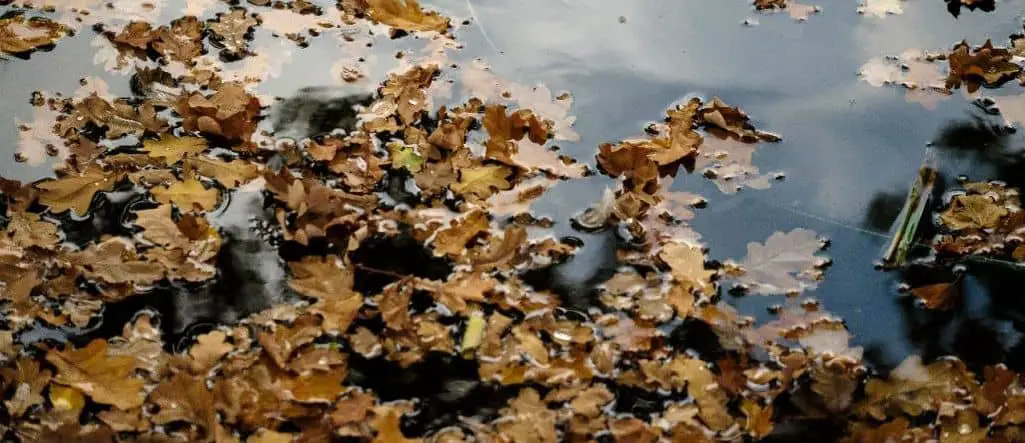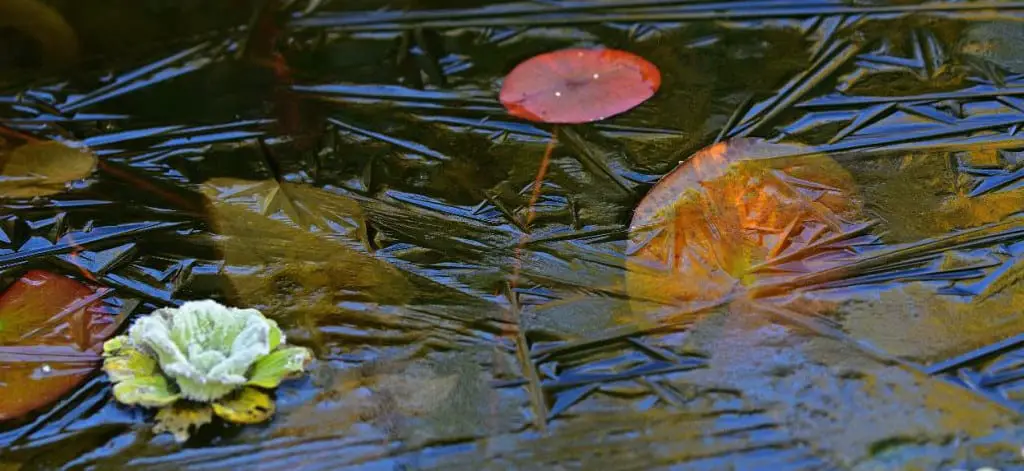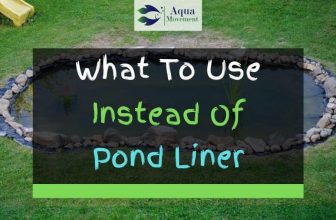6 Steps On How to Winterize a Pond
Everyone knows that ponds can really brighten up and enliven a garden. It can become a real feature and is sure to impress all your visiting friends and family happy. This is just as true in cold climates as it is in warmer areas.
However, keeping a garden pond in a cold climate brings with it its own set of problems and unique challenges.
Some areas face very tough winters and an outside pond can prove very difficult to keep in good condition over a harsh winter.
But, if you take the precautions outlined in this article about how to winterize a pond, then your pond should emerge the next spring in tip-top condition. Stay tuned!
Table of Contents
How to Winterize a Pond
There are a number of key steps you should take before the harshness of winter hits. Some of these tips and tricks might be more applicable to you than others, and you should make sure to adapt and modify these tips to suit your own circumstances.
If you have a pond located in the colder mid-west states, or somewhere in the depths of the Arctic, then here are the fundamentals of winterizing a pond for you!
Do a thorough Pond Cleaning

This is a crucial step in the winterizing process, but unfortunately it is often overlooked in the process. Of course, cleaning should be an important part of your regular maintenance routine anyways, but the final clean before you shut up shop for the winter is particularly important.
The reason why this is so important is that if organic matter (such as dead leaves and plants) finds its way into the pond, then the decaying organic matter can really threaten the health of the fish in your pond.
The nutrients released in this process can throw the ecosystem far from its natural equilibrium and this can have disastrous knock on effects for the fish winterizing in your pond.
You should use a pond skimmer to recover any leaves that fall in. Also, to keep your pond in sublime condition, then you might want to cover the pond with netting or some other cover to keep out the falling leaves.
Prune your Plants
Aquatic plants can prove to be another menace to your pond and pond fish over the winter. The reason for this is the same. The decaying organic matter can leach nutrients and harmful substances into the water, causing long term damage to the health of your fish.
The decaying matter also can release toxic gases, which can build up in the pond water and damage your beloved fish.
The best way to avoid this is to properly prune your plants. You should trim all your aquatic plants right down to the base, making sure to remove any side branches or foliage, so that they cannot fall into the pond water.
Use the right Bacteria
We all know that bacteria play an important role in keeping your pond clean, clear and with a good chemical balance. Biological filtration is essential to keep your pond in order. These bacteria are known as ‘good bacteria’ or ‘positive bacteria’ because they are very important for the nitrogen cycle, which sets up the equilibrium in the pond.
In the confines of a pond, the fish can produce large amounts of waste products. Unfortunately, in high concentrations this can prove to be toxic for them and detrimental for the general health of the ecosystem.
This is where the good bacteria kicks into action. These tiny microorganisms attach themselves to surfaces in the pond and live to breakdown substances such as nitrates, phosphate and ammonia, and reduces them to harmless substances that the other creatures can tolerate.
This is the famed nitrogen cycle, and eventually, after a few weeks of the bacteria working, the levels of nutrients in the water should fall to a low, steady level. Unfortunately, not all bacteria can survive the harsh conditions of a cold winter equally well. That is why it is important to invest in good quality cold water bacteria suitable for outdoor use. This can be found from many suppliers online, or from reputable pet stores.
[amazon box=”B0002HBMMG”]
It is important that you follow the instructions for how to apply this bacteria very carefully. By doing this you are making sure that there will still be a base level of biological action to break down harmful substances during the winter, hence keeping your carefully tended ecosystem happy and healthy.
Remove the Pump and Clean the Filter
This is another important step in how to winterize a pond and is also easy to overlook. Before you set up your pond for the long winter hiatus, you should remove the pump from the pond. Then, carefully remove the filter from the pump. The filter might have a mechanical component and possibly a biological component too.
You should thoroughly clean the straining faces, by removing any built-up dirt, debris, organic matter or insoluble grit. If you are cleaning the biological component (e.g. bio balls or ceramic rings) then make sure to do so carefully and with a minimum amount of handling so that you don’t damage the inherent ‘good’ bacteria.
When you place the pump back in the water, make sure that is stays turned off and also pay attention to any parts of the pumping apparatus that stick out above the water surface. You should remove any of these parts (e.g. water tubing) as they may become damaged if and when the water freezes over during the winter.
After you have attended to this important job you should also replace any of the aquatic plants you removed for pruning prior to this step. Once you have completed this task, your precious pond is very close to being fully winterized.
Install a Pond Heater

Most hardy cold-water fish can tolerate the very cold temperatures experienced in outdoor ponds during the harsh winters. They can manage this by dropping their metabolism to an extremely low level during this period, hence going into a state of near hibernation where they do not need much heat, or calories, and their activity levels and responsiveness levels are similarly low.
Before you winterize any fish, you should always consult a trusted source to make sure that your pond species is indeed suitable. A lot of less hardy species will need to be brought indoor into warmer conditions to wait out the winter.
Anyways, although many hardy species can survive the low temperatures, all fish species, without exception, will need a plentiful supply of dissolved oxygen to survive. Although their consumption of dissolved oxygen will drop during the winter, you should still make sure that there is some hole in the ice at the water surface to make sure fresh oxygen can enter the water.
One of the best and most convenient ways of doing this is by using a floating de-icer.
[amazon box=”B002QXN1HS”]
This is an extremely nifty device that will float on the top of the water and has heating elements installed that will make sure there is a nice circular gap maintained to the outside atmosphere. This is an important part of any proper pond winterizing kit, and it is important that you have one to know how to winterize a pond.
Note that in slightly warmer climates, where freezing is common but not deep, then moving water might be enough to stop your pond from freezing over. In this case, you might be able to avoid using a pond de-icer and just keep your pump running instead.
Treat your Pump properly
What you decide to do with your pump over the winter really depends on how cold your winters get. In extremely cold climates, where there is a strong chance of the water in your pond freezing all the way to the bottom, it is best to remove your pump completely. That’s because the freezing water could cause irreparable damage to your pump, which could be a very costly mistake to make.
In slightly warmer conditions it is usually sufficient to just turn off your pump (so no ice circulates through it) but leave it in the bottom of the pond. It is usually best to keep the pump, and any wintering aquatic plants, in the deepest part of the pond where it is least likely to freeze over.
Conclusion
How to winterize a pond in somewhat cold climates can be a real quandary for most pond owners. A lot of people are overly fearful about the damage that a severe cold snap might do to their beautiful pond, but there is no reason to be stressed.
If you follow the simple advice and steps outlined in this article then you should come out the other side with a well-protected, thriving garden pond. Be sure to clean your pond well before the winter, be especially careful to remove any trapped foliage and clean the pond filter.
You should also prune any aquatic plants, remove the tropical varieties and replant the hardy plants in the deepest part of the pond. Then switch off your pump and if necessary, install a floating pond de-icer.
This should keep your pond in good conditions during the dark days of winter.




